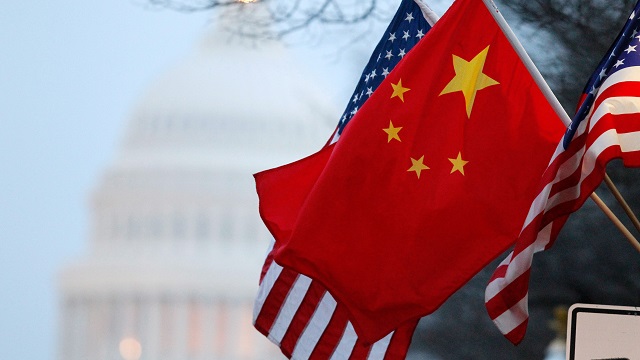
New rules are needed as strains in their relationship multiply over industrial policies that are not so different
COMMENT | DANI RODRIK | It is common to think of US-China tensions as the inevitable result of stark differences between the two countries. The United States has a fully capitalist market economy, whereas the Chinese government keeps a strong hand on the economic tiller. For all its faults, the U.S. is a democracy, whereas China is a single-party regime that brooks no political challenge. Though the U.S. remains the world’s most powerful country, China’s growing economic and geopolitical might threatens American hegemony.
But while all that is true, many US-China conflicts stem from their increasing commonalities. America’s relative decline has made it feel more insecure, prompting economic and national-security policies that are reminiscent of China’s own decades-long strategy of prioritising national economic strength and renewal over the requirements of an open, “liberal” global economy. Paradoxically, as the U.S. emulates strategies that served China quite well, the strains in the bilateral relationship multiply.
Even though China turned toward markets after 1978 and significantly liberalizsd its economy, the Communist Party of China’s policies reflected more than the pursuit of economic growth. They were part of a national project of rejuvenation designed to re-establish China as a major power. Consequently, China played the globalisation game by its own rules, sheltering and promoting its own industries while leveraging external markets. The state was never too shy to step in and subsidise what it saw as strategic industries (either from a commercial or national-security standpoint).
I once heard a Chinese policymaker describe this strategy as “opening the window, but placing a screen on it.” The Chinese economy would get fresh air – foreign technologies, access to global markets, critical inputs – but it would keep out harmful elements such as destabilising short-term capital flows, excessive competition that might harm its nascent industrial capabilities, or restrictions on the government’s ability to conduct industrial policy.
China’s phenomenal economic growth was ultimately a great boon for the world economy, as it created a large market for other countries’ firms and investors. Moreover, its green industrial policies have made a substantial contribution to the global low-carbon transition by lowering the prices of solar and wind energy.
Naturally, other countries have complained about China’s interventionist and mercantilist practices. Most consequentially, the rapid expansion of Chinese exports – the so-called “China shock” – wreaked economic and social havoc on hard-hit manufacturing communities and lagging regions in Western economies, creating fertile ground for the eventual rise of right-wing authoritarian populists such as Donald Trump. Yet as long as advanced economies’ policies were driven by a consumerist, market-fundamentalist logic, these effects did not cause huge strain on relations with China.
On the contrary, many intellectual and policy elites thought Western and Chinese approaches to the economy were complementary and mutually supportive. Historians Niall Ferguson and Moritz Schularick coined the term “Chinamerica” to describe the apparently symbiotic relationship in which China subsidises its industries, and the West happily consumes the cheap goods China sends it. So long as this conception reigned in the West, workers and communities that lost out received little help or sympathy; they were told to retrain and move to areas with better opportunities.
But the situation was unsustainable, and the problems posed by the disappearance of good jobs, growing regional disparities, and increased foreign dependence on strategically important industries became too big to ignore. U.S. policymakers started to pay more attention to the production side of the economy, first under Trump and more systematically under Joe Biden, whose administration has embraced a different set of priorities that favors the middle class, supply-chain resilience, and green investment.
The new strategy revolves around industrial policies that are not so different from those that China has long practiced. New technologies and advanced manufacturing activities are subsidized, as are renewable technologies and clean industries. Local suppliers and domestic content are encouraged, while foreign producers are discriminated against. Investments by Chinese companies in the US are heavily scrutinized. Under the “small yard, high fence” doctrine, the U.S. seeks to restrict Chinese access to technologies deemed critical to national security.
If these policies succeed in producing a more prosperous, cohesive, and secure American society, the rest of the world will benefit, too – just as Chinese industrial policies benefited trade partners by expanding the Chinese market and reducing the price of renewables. The implication, then, is that these new policies and priorities do not necessitate a deepening US-China conflict; but they do require a new set of rules to govern the relationship.
A good first step is for each side to abandon hypocrisy and recognize the similarity of their approaches. The U.S. continues to criticise China for allegedly pursuing mercantilist and protectionist policies and violating the norms of a “liberal” international order, while Chinese policymakers accuse the U.S. of turning its back on globalisation and waging economic warfare on China. Neither side seems to be aware of the irony: China put a screen on its open window; the U.S. is putting a high fence around a small yard.
A second important step is to pursue greater transparency and better communication about policy objectives. In an interdependent global economy, it is inevitable that many policies targeting national economic well-being and domestic social and environmental priorities will have some undesirable side effects on others. When countries engage in industrial policies to fix important market failures, their trade partners need to be permissive and understanding. Such measures should be distinguished from those that are explicitly beggar-thy-neighbor (meaning they generate benefits at home precisely because they harm others).
Third, it is important to ensure that restrictive national-security policies are well-targeted. The U.S. characterises its export controls as “carefully tailored” measures on “a narrow slice” of advanced technologies that raise “straightforward” national-security concerns. These self-professed limitations are praiseworthy, but there are questions about whether the actual policy on semiconductors fits this description, and about what additional measures might look like. Moreover, the US tends to define its national security in overly expansive terms.
The U.S. will continue to put its economic, social, environmental, and national-security concerns first, and China will not abandon its state-driven economic model. Cooperation will not be the order of the day. But it may become a bit easier if both countries recognize that their policies are neither too different nor necessarily harmful to the other side.
*****

Dani Rodrik, Professor of International Political Economy at Harvard Kennedy School, is President of the International Economic Association and the author of `Straight Talk on Trade: Ideas for a Sane World Economy’ (Princeton University Press, 2017).
Copyright: Project Syndicate, 2024.



